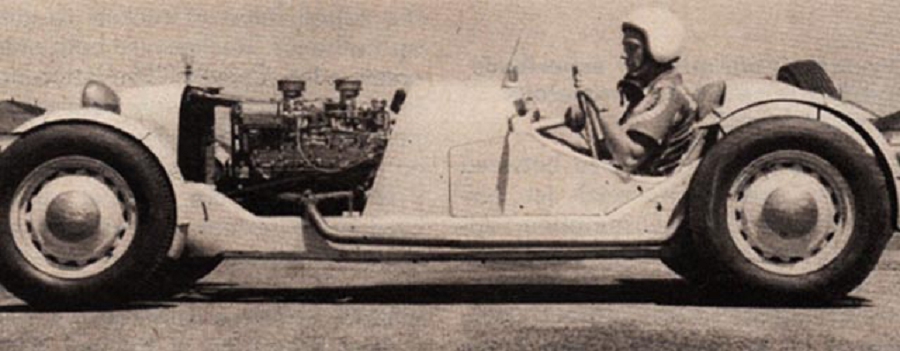
Hi Gang…
Back in the ‘50s, you could build your own sports car with a fiberglass body purchased from Glasspar, Victress, Woodill, and others or…..you could bite the bullet and built your own car from scratch – from soup to nuts. One of the folks who did this and did it successfully was Chuck Manning, who not only built his own car from the frame up, but campaigned it successfully on various race tracks across the West Coast in the early to mid ‘50s.
While I’ve been aware of a number of articles about the “Manning Special” in a variety of automobile magazines from back in the day, this is the first time I’ve seen mention of it in the wider press – here in Popular Science. Today’s article was sent in from good friend Alden Jewell, and I was pleased to see it was “picture heavy” in its publication.
Let’s see what Popular Science had to say about this special race-winning sports car.
Aircraft Engineer Builds Sports Car Like A Plane
Popular Science: December 1952
When he set out to build himself a sports car, C.G. (Chuck) Manning decided to apply some of the principles he had learned as a structures engineer at the El Segundo, California plant of Douglas Aircraft.
Using glass fiber for a body of maximum rigidity and minimum weight, powered by a Mercury motor hopped up to 180 horsepower, he forged a four-wheel thunderbolt that tips the beam at a buoyant 1615 pounds – almost 300 less than a 54 horsepower MG.
In nine months he has raced his “Manning Meteor” to third spot in the national Sportscar championship.
Summary:
This was a neat car and was raced with great success as mentioned above. Chuck Manning, a good friend of Chuck Tatum, went on to offer plans on how to build this car, and several were built and raced – some remain today and have been restored to great acclaim. More about this special scratch-built car by Chuck Manning in future stories here at Forgotten Fiberglass.
Hope you enjoyed the story, and until next time…
Glass on gang…
Geoff
——————————————————————-
Click on the Images Below to View Larger Pictures
——————————————————————-
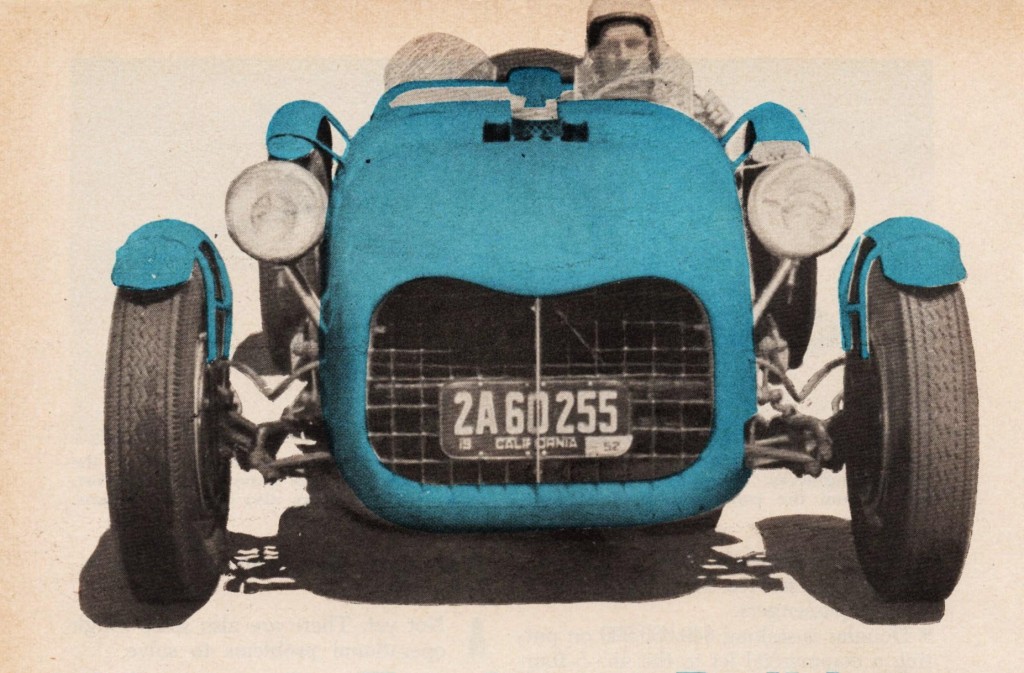

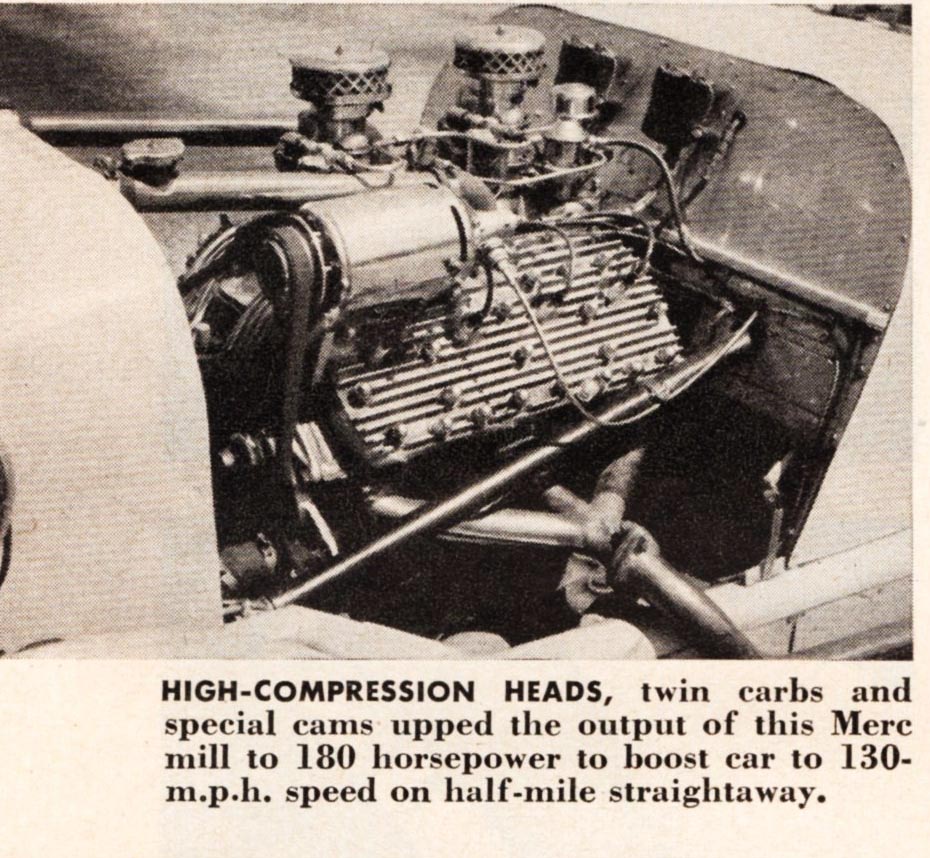



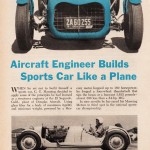
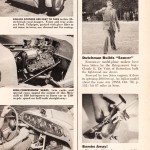
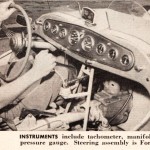
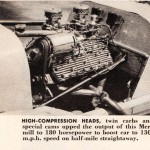
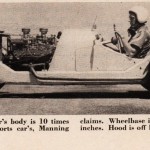



So does anyone have a copy of the actual frame plans that Manning sold? I really would love to have a copy and would be happy to pay for either a pdf or paper copy. My email is jebbesen05@yahoo.com
This is not unlike one of my all time favourite 1950’s specials, the “Troy”:
http://2shores.com/cars/offers/1959-Troy-Roadster/116/detail
These are some of the best detail photos I have seen. The cycle fenders are tire covers from Fords – front 16″ 1935 and rear 17″ 1933/34. Someone sells fiberglass ones on fleaBay, The tail-light is the one that was used on Hudson pick-ups and the 37 Ford pu. The fender brackets may be forged steel Model T parts. The shifter remote is close to what Allard had, but simpler.This car comes from a period when hot rod mechanics and WWII aircraft guys combined their knowlege. There were lots of both in SoCal.
Chuck Manning always felt the 1936 to 1939 Ford wide bolt patern wheels were stronger. They were 16″ and came in two types. The Ford passenger car and wider heavier gauge ones from Lincoln Zephyrs aand Ford Tonner trucks. They have a wider rim that works better with radial tires.
Those wheels also made a lighter set up than the later 1940 style.
They were stronger do to the wide bolt spacing. The overall weight with the brake drums is about the same as the 1940 to 1948 type. Porsche, VW and English Fords had this style to deal with rougher roads in the WWII era.
It’s truly amazing what guys like Manning did back then. At 1650 pounds, this ride was only 300 pounds heavier than an F5000 car of the late 1960s-early 1970s.
AWESOME!!!! Chuck was all over the magazines of the day. I just didn’t expect Popular Science. Although not all articles are filled with useful or correct information they are all helping me in my build. The detailed pictures of the interior and the P-38 rear view mirrors are priceless.